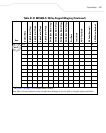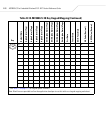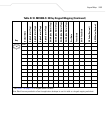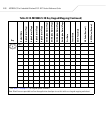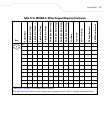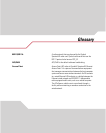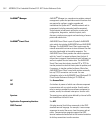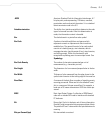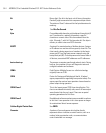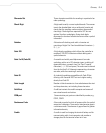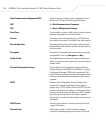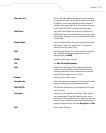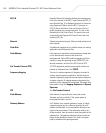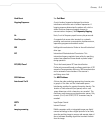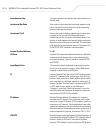
Glossary
GL-3
ASCII American Standard Code for Information Interchange. A 7
bit-plus-parity code representing 128 letters, numerals,
punctuation marks and control characters. It is a standard
data transmission code in the U.S.
Autodiscrimination The ability of an interface controller to determine the code
type of a scanned bar code. After this determination is
made, the information content is decoded.
Bar The dark element in a printed bar code symbol.
Bar Code A pattern of variable-width bars and spaces which
represents numeric or alphanumeric data in machine-
readable form. The general format of a bar code symbol
consists of a leading margin, start character, data or
message character, check character (if any), stop character,
and trailing margin. Within this framework, each
recognizable symbology uses its own unique format. See
Symbology.
Bar Code Density The number of characters represented per unit of
measurement (e.g., characters per inch).
Bar Height The dimension of a bar measured perpendicular to the bar
width.
Bar Width Thickness of a bar measured from the edge closest to the
symbol start character to the trailing edge of the same bar.
Baud Rate A measure of the data flow or number of signaling events
occurring per second. When one bit is the standard "event,"
this is a measure of bits per second (bps). For example, a
baud rate of 50 means transmission of 50 bits of data per
second.
BIOS Basic Input Output System. A collection of ROM-based
code with a standard API used to interface with standard
PC hardware.
Bit Binary digit. One bit is the basic unit of binary information.
Generally, eight consecutive bits compose one byte of data.
The pattern of 0 and 1 values within the byte determines its
meaning.
Bits per Second (bps) Bits transmitted or received.



